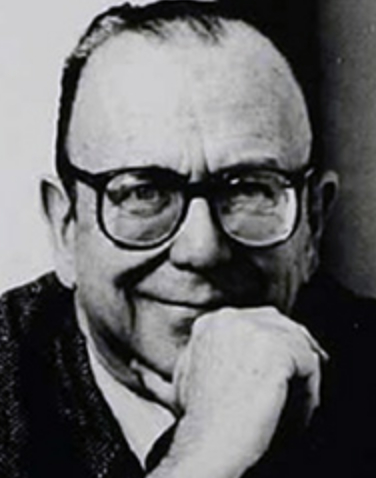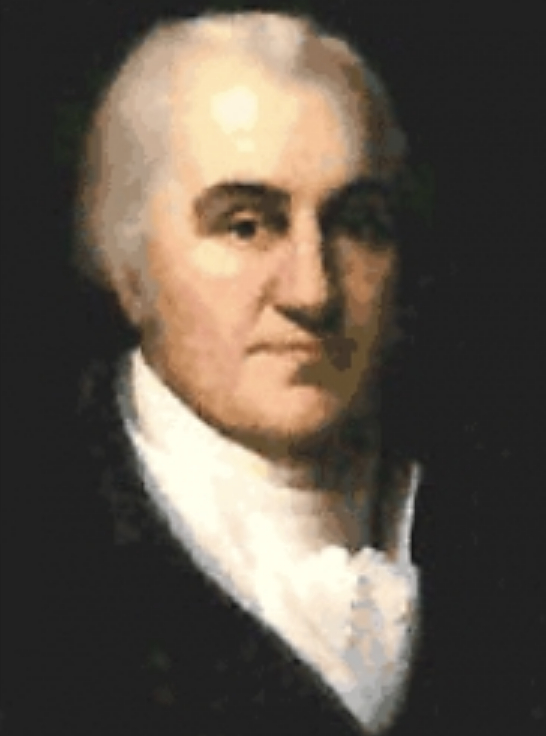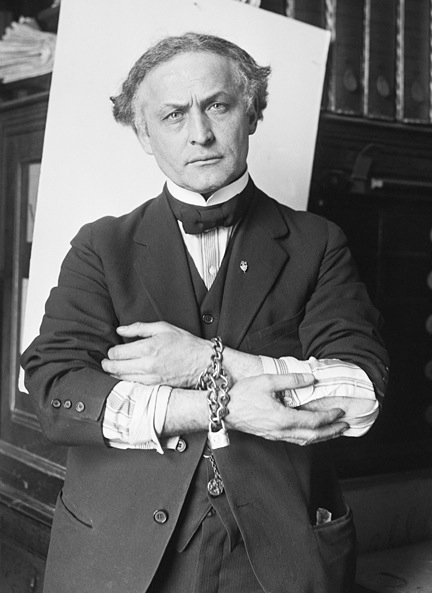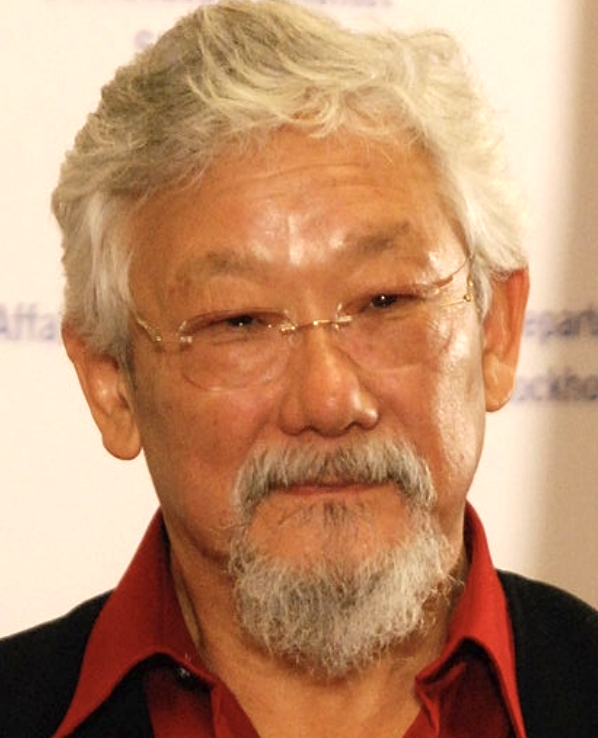March 24
Robert Louis Heilbroner

On this date in 1919, economist and social theorist Robert Louis Heilbroner was born into such a wealthy New York City family that he told the New York Post in 1972: “I was reared during the Great Depression and never knew there was one.” His German-Jewish father co-founded the men’s clothing retailer Weber & Heilbroner. He graduated summa cum laude from Harvard in 1940 with B.A.s in history, govenment and economics. His doctorate was earned from the New School of Social Research in 1963.
In 1972 the New School made Heilbroner, a nontheist, the first Norman Thomas Professor of Economics, named for the Socialist Party presidential candidate. Heilbroner served during World War II and was awarded a Bronze Star. The most famous of his 20 books on economics is The Worldly Philosophers: The Lives, Times, and Ideas of the Great Economic Thinkers (1953). Known for its inviting writing style and humanization of economics, the book has been translated into 20 languages, has sold 4 million copies and has been used extensively as a college textbook. He died of a stroke at age 85 in 2005.
What sort of religion will transform capitalism? A “statist” religion, says Heilbroner, that will elevate mankind’s “collective and communal destiny” and absolutely subordinate private interests to public requirements.
— New York Times review of Heilbroner's 1976 book "Business Civilization in Decline" (March 21, 1976)
Joel Barlow

On this date in 1754, Joel Barlow was born in Redding, Connecticut. Educated at Dartmouth College and Yale, he served as a chaplain in the Revolutionary War. His edition of The Book of Psalms, issued in 1785, was widely used by the Congregationalists. Barlow, a liberal thinker, left the ministry, took up law and was admitted to the bar in 1786. As a writer and poet he was a member of the well-known “Hartford Wits.”
Barlow became a deist after traveling in France, according to C.B. Todd (Life and Letters of J. Barlow, 1886). Barlow’s claim to freethought fame was as counsel to Algiers, when he secured the release of prisoners and negotiated the Treaty with Tripoli of 1797, which stated that the U.S. was not a Christian nation. It was written in Algiers in Arabic and signed on Nov. 4, 1796. Barlow translated the treaty, which was ratified by the U.S. Senate on May 29, 1797.
George Washington was president when the treaty was signed in Tripoli, but it was signed by John Adams. Barlow also befriended Thomas Paine and was responsible for getting Paine’s The Age of Reason published during his imprisonment in Paris. Barlow became U.S. ambassador to Napoleon’s court in 1811 and died in 1812 at age 58 in Poland while traveling to meet Napoleon during his retreat from Moscow.
“As the Government of the United States of America is not, in any sense, founded on the Christian religion; as it has in itself no character of enmity against the laws, religion, or tranquility, of Mussulmen; and as the said States never entered into any war or act of hostility against any Mahometan nation, it is declared by the parties that no pretext arising from religious opinions shall ever produce an interruption of the harmony existing between the two countries.”
— Article 11, Treaty of Tripoli
Harry Houdini

On this date in 1874, Erik Weisz was born in Budapest, Hungary. His parents were Rabbi Mayer Weisz and Cecília Steiner. In 1878 the family emigrated to America and settled in Appleton, Wis., before relocating to New York City in 1887. He chose his stage name because he admired the French magician Jean Eugene Robert-Houdin. Houdini began his magic career in 1891, initially performing traditional magic tricks but later focusing almost exclusively on escape acts.
In 1894 he married his wife Bess, a fellow performer. Houdini toured Europe beginning in 1900 and became well-known for an act where police would restrain him in handcuffs which he would then escape. He toured America with variations of this act and other escape routines, including escaping from a straitjacket and the famous Chinese Water Torture Cell, where Houdini would escape from a water-filled cell where he was hanging by his ankles. He served as the president of the Society of American Magicians from 1917 until his death.
Although many magicians of the era claimed to have supernatural powers, Houdini never did. In the 1920s he began to focus on debunking psychics and mediums, using his training in magic to expose techniques that created the illusion of their so-called “supernatural” powers. He was part of a Scientific American committee that offered a cash prize for successful proof of supernatural abilities, a prize that was never awarded.
He made a pact with his wife, who was also his stage assistant that she was to make regular attempts to contact him after his death, including an annual séance on Halloween. If it was possible, he said he would convey to her a secret phrase they agreed upon to prove it was really him. He never made contact.
After 10 years, Bess bestowed the responsibility for the ritual to trusted magician friend Walter Gibson. The tradition has been passed down to other magicians who have preserved it to this day, with no contact with Houdini ever reported. James Randi carried on Houdini’s challenge, offering $1 million dollars to anyone who could demonstrate supernatural ability.
Houdini died in 1926 of peritonitis and appendicitis, aggravated by punches to the stomach. (Houdini famously was asked by J. Gordon Whitehead if he could sustain punches to the stomach; after Houdini’s affirmative response, Whitehead immediately punched the magician, who was not prepared for the blows.) He was buried in a Jewish cemetery in Queens, but his gravesite pays homage to his career in magic rather than his Jewish heritage; in fact, a bust of Houdini was placed at the grave in 1927, although a “graven image” was not allowed according to Jewish law. D. 1926.
“I have made compacts with fourteen different persons that whichever of us died first would communicate with the other if it were possible, but I have never received a word.”
— Houdini, "A Magician Among the Spirits" (1924)
David Suzuki

On this date in 1936, scientist and environmental advocate David Suzuki was born in Vancouver, British Columbia. His family was subjected to internment in Canada during World War II and relocation afterward. He earned his undergraduate degree in biology from Amherst College in 1958 and his Ph.D. in zoology from the University of Chicago in 1961. He joined the University of British Columbia in 1963 and worked as a genetics professor until retiring in 2001.
He has been awarded 25 honorary degrees and is the recipient of numerous other awards for his work in science, environmental activism, science writing and science broadcasting. Suzuki has written over 50 books, including 19 children’s books and a widely used genetics textbook, An Introduction to Genetic Analysis (1976).
His television work includes “The Brain,” a Discovery Channel series; “The Secret of Life,” a PBS/BBC series; and “The Nature of Things with David Suzuki.” His more popular documentaries include “It’s a Matter of Survival” and “From Naked Ape to Superspecies.” He is a co-founder of the David Suzuki Foundation, whose goals are protecting nature and the climate, transforming the economy, reconnecting with nature and building community.
He was married to Setsuko Sunahara from 1958 to 1965. They had three children. In 1973 he married Tara Cullis, with whom he had two daughters.
“As an atheist, Suzuki declares, he has no illusions about life and death, adding that the individual is insignificant in cosmic terms. Human beings must come to terms with the unbearable reality that they, like all life, will be extinguished.”
— Review of "David Suzuki: The Autobiography," The London Free Press (April 29, 2006)
Tig Notaro

On this date in 1971, entertainer Mathilde O’Callaghan “Tig” Notaro was born in Jackson, Miss., to Mathilde (O’Callaghan) and Pat Notaro. Her brother Renaud, a year older, started calling her Tig when she was 2. Raised until kindergarten in Pass Christian, Miss., she moved with her family to Spring, Texas, a Houston suburb.
Notaro: “My mother was very free-thinking and I picked up a lot of her sensibilities.” (Mother Jones, June 13, 2016) She hated school and failed three grades before dropping out of high school in ninth grade (getting her GED at age 19).
In the mid-’90s in Denver, she started Tignation Promotions to book and manage bands. That led her to Los Angeles, where she tried stand-up for the first time, while working at restaurants and coffee shops and babysitting to make ends meet. She was featured in 2004 on “Comedy Central Presents.”
She released her debut stand-up album “Good One” in 2011. Her 2012 album “Live” (pronounced “liv”) was a show recorded four days after she was diagnosed with cancer in both breasts and had been hospitalized with a debilitating intestinal disease called Clostridioides difficile. (During some shows, she briefly bares her chest to show the results of her double mastectomy.) The Grammy-nominated album focuses on her medical struggles, a relationship breakup and the death of her mother during a four-month period.
Those struggles also brought out some strong feelings about religious faith. Her memoir “I’m Just a Person” (2016) has a chapter titled “God Never Gives You More Than You Can Handle” that demolishes that claim:
“Losing my ability to eat food — and more than twenty pounds — as well as losing my mother; losing my breasts; having stitched and scabbed incisions across my chest that made it almost impossible to be hugged or to move; being unable to lift my arms until I was able to rebuild excised muscle tissue; being terrified of dying, and if I lived, of never working again; and going through a breakup while having constant stabbing pains in my gut was, ultimately, more than I could handle.”
But she eventually did recover. Her first stand-up special, “Tig Notaro: Boyish Girl Interrupted,” was released by HBO in 2015 and later as her third album. She co-wrote, produced and starred in a semi-autobiographical TV pilot called “One Mississippi” in 2015. It received a six-episode series order from Amazon.
A 2015 Netflix movie called “Tig” chronicled her attempts to become pregnant with her fiancée Stephanie Allynne, an actress and comedian. They married that year and welcomed twin sons in 2016, conceived using Allynne’s eggs via a surrogate.
Netflix released Notaro’s second one-hour special, “Happy To Be Here,” in 2018. During the pandemic, she started two podcasts — one called “Don’t Ask Tig,” on which guests answered listener questions, and “Tig and Cheryl: True Story,” co-hosted by actress Cheryl Hines.
Notaro launched her “Hello Again” tour in January 2022.
PHOTO: Notaro at the 2018 San Diego Comic-Con International; Gage Skidmore photo under CC 3.0.
“My biggest problem with people who talk about God and prayers is how confident they are about how it all works out until it doesn’t work out. This kind of willful blindness astounds me. If something is a miracle when it works, then when it doesn’t work that should not just be ignored; it should be questioned.”
— From Notaro's memoir "I'm Just a Person" (2016)
